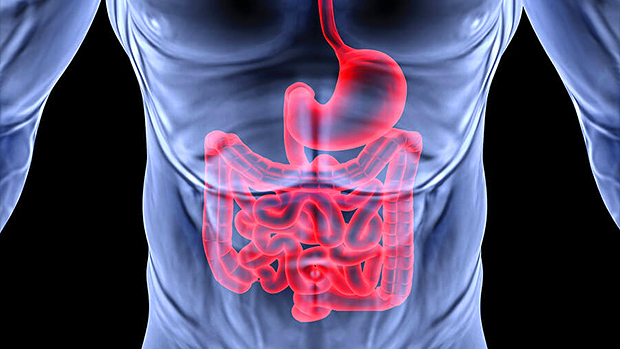I've long droned on, to anyone who would listen, about the prevalence of vitamin D deficiencies. I've bazooka'd readers with statistics about the role vitamin D plays in the prevention of a murderer's row of diseases ranging from cancer to cardiovascular disease and even the infectious diseases that cause pandemics.
I've tried using interesting epidemiological factoids about how people who live closer to the equator (and ipso facto, are exposed to abundant sunshine) generally have better disease prognoses than those that live farther away from it.
(Although truth be told, equatorial countries are also facing a vitamin D deficiency because of a variety of socioeconomic, cultural, and religious factors, any or all of which keep their citizens from getting adequate amounts of sunlight.)
I've even nagged about the importance of eating vitamin D enriched foods or conventional vitamin D supplements, but I've since learned that those particular strategies might be woefully inadequate because industry and biology have seemingly conspired to keep vitamin D from getting into your body.
Rickets were a big deal back in the 1930s. It caused soft, weak bones, and it afflicted many mostly-poor children in several northern U.S. cities. The cure was simple: a tiny bit of vitamin D. (Vitamin D influences calcium absorption, which hardens and strengthens rickets-ravaged bones.)
To address the problem in one broad, humanitarian stroke, U.S. dairies began adding vitamin D to their milk, and it largely eradicated the disease. Dairies continued to add vitamin D to their products in the subsequent decades, as much out of habit as anything, but then came the fat-phobic, "cholesterol is going to kill us all" 1980s.
The dairies took out all or most of the fat from many of their products while still fortifying them with vitamin D. Unfortunately, vitamin D is fat soluble. Without fat, the body doesn't absorb it, so what you've got is a sort of a water-water everywhere, but not a drop to drink situation.
Of course, plenty of people drink whole-fat dairy products, but it turns out it doesn't much matter either way because a large proportion of that vitamin D – not only in milk, but other vitamin D fortified products, including multi-vitamins – is wiped out due to environmental conditions such as adverse temperature, hostile pH, salt, oxygen, and even light.
Beyond that, there are several hurdles technology has to overcome in order to fortify foods with vitamin D. It's difficult for them to achieve homogenicity into whatever food they're dumping it into.
There's also the degradation during processing and storage that I mentioned above and/or negative interactions with other food components.
And that's just the industrial problems faced by vitamin D fortification/supplementation. There are biological ones too.
Lack of sufficient sunlight is a big cause of vitamin D deficiency. This lack of sunlight might be caused by geographical location, the angle of the sun and the length of sun exposure, pollution, and the widespread advice in Western countries (sometimes to the detriment of society) to avoid any direct sunlight in general.
The problem is compounded by the dearth of vitamin D-rich foods. Aside from a few varieties of mushrooms, eggs, cod liver oil, salmon and other fatty fish, and certain algaes, few foods contain "therapeutic" amounts of vitamin D.
The food industry has tried to fix the problem by fortifying such foods as the aforementioned milk, various cereals, and certain edible oils, but deficiencies around the globe still prevail for the simple reason that vitamin D isn't absorbed very well by the body.
The total amount of vitamin D (both D2 and D3) present in the food you eat doesn't reflect its bioavailability since a lot of the vitamin is bound up in the actual food and remains so after you eat it. Lots of things contribute to this: the physiochemical form of the vitamin D, the fatty acids and fibers in the food, the size of the food particles themselves, and the quantity of the vitamin itself.
Interactions between vitamin D and other fat-soluble nutrients might also be a factor, as well as a bunch of host-related issues (age, disease state, fed condition, genetics, obesity, etc.).
Then there's how you might prepare any vitamin-D-containing foods. Heat affects it. Light affects it. Moisture, oxygen exposure, and even storage conditions affect levels of vitamin D. That means that any vitamin-D containing foods that are boiled, pressure-cooked, Insta-Potted, baked, or air fried end up being vitamin-D compromised.
It's no freaking wonder that vitamin D deficiencies are rampant.
Next to regular but prudent sun exposure, supplementation is the best solution to vitamin D deficiency. But I'm not talking about taking old-technology vitamin D supplements; they're prone to all the previously mentioned manufacturing and absorption problems.
The answer is microencapsulated vitamin D3. This form of the vitamin is manufactured by encapsulating vitamin D3 molecules in liposomes or solid lipid nanoparticles.
The vitamin then presents as tiny "beadlets" and is protected from moisture, oxidation, pH, temperature, and mechanical forces. The microencapsulated product is stable, water dispersible, and, most importantly, highly bioavailable.
Studies show that the effects of this form of vitamin D3 remain constant for up to 14 days, making it clearly superior to the conventional vitamin D3 supplements that comprise most of the market.
Oddly, the supplement market, in general, has been criminally tardy in adopting this new technology. Biotest, however, quickly recognized the value of microencapsulated vitamin D3 and immediately incorporated it into its I-Well™ Immune Support product.
Each 3-capsule serving contains 5,000 IU of vitamin D3 (as choleocalciferol), along with 400 mg. of beta-1,3-glucan, 400 mg. of EGCG, and 400 mg. of solid lipid curcumin particles, each with its own immune-boosting properties.
Rapid adoption of this new technology by consumers and manufacturers could well change the health status of millions. Here's hoping they pay attention to the science.

- Maurya VK et al. Vitamin D microencapsulation and fortification: Trends and technologies. J Steroid Biochem Mol Biol. 2020 Feb;196:105489. PubMed.
- Šimoliūnas E et al. Bioavailability of Different Vitamin D Oral Supplements in Laboratory Animal Model. Medicina (Kaunas). 2019 Jun 10;55(6):265. PubMed.





